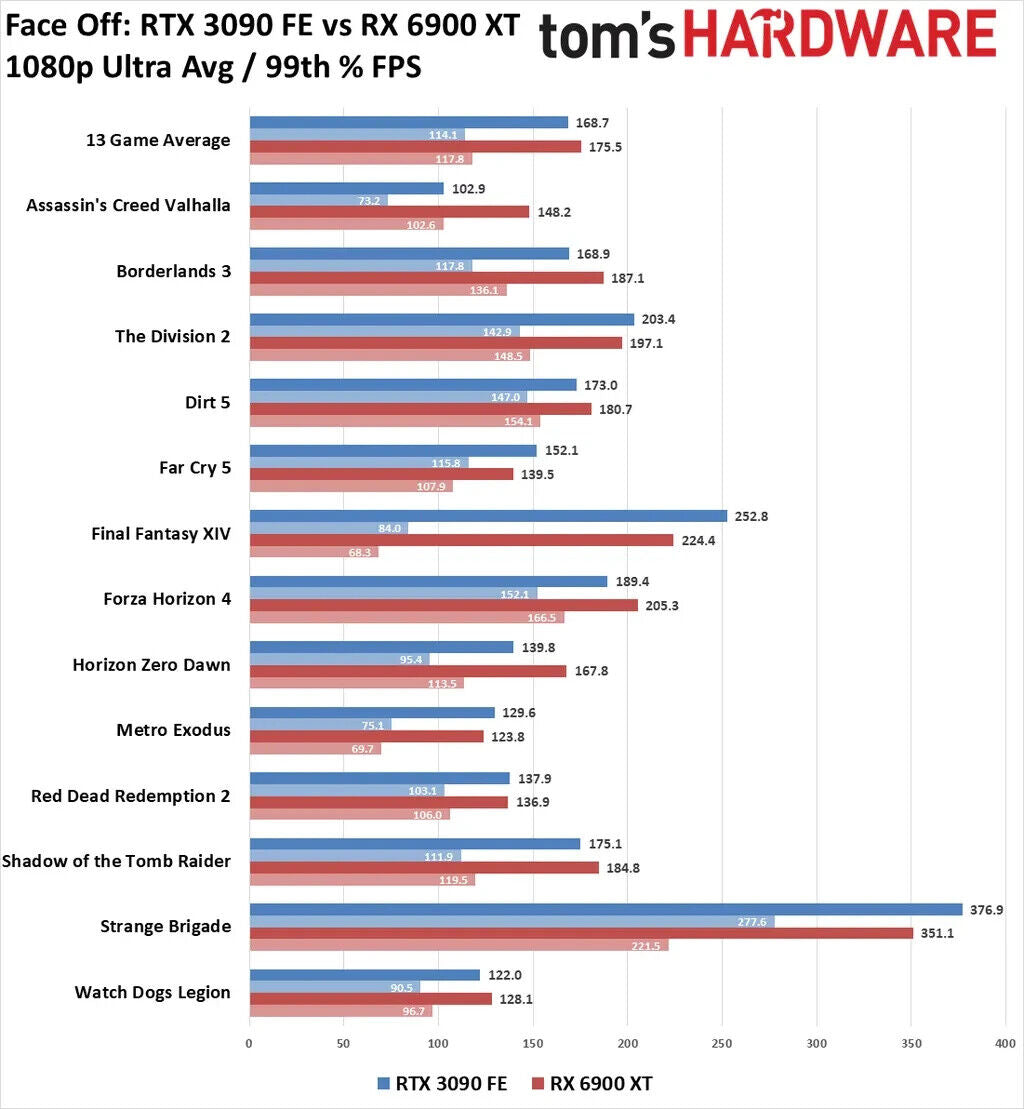The GeForce RTX 3090 and Radeon RX 6900 XT target the extreme performance market, though the 3090 ends up in a category of its own. These are, respectively, the two fastest GPUs currently available from Team Green and Team Red — that's Nvidia and AMD if that wasn't clear — sitting at the top of our GPU benchmarks hierarchy and claiming spots on our list of the best graphics cards. These aren't great values, but if money isn't a concern, or you're looking for ways to burn through your stimulus check, which one should you buy? We'll look at performance, features, efficiency, price, and more to determine the winner.
Nvidia's RTX 3090 launched on September 24, 2020, one week after the RTX 3080. While it's officially part of the GeForce brand, Nvidia positions it as a new take on the Titan formula. Titan cards were previously only available directly from Nvidia as a reference design, with prices ranging from $999 (the original GTX Titan and GTX Titan Black) and eventually topping out at $2,999 (the Titan V). By comparison, $1,499 for the RTX 3090 seems somewhat reasonable, but there's a catch: You give up some of the enhanced features that the Titan cards offered, like improved driver support for professional workloads.
AMD's RX 6900 XT, by comparison, has a far more mundane history. AMD launched the RX 6900 XT on December 8, 2020. It's the top of the Big Navi product stack and uses the same Navi 21 GPU as the RX 6800 XT, only this time it's fully enabled with 80 CUs instead of 72. At best, it's about 10% faster than the RX 6800 XT, while the $999 official launch price represents a more than 50% increase in cost compared to its lesser sibling.
1. Gaming Performance
For most gamers, performance plays a critical role in determining which graphics card to buy. We've benchmarked a baker's dozen of games at 1080p, 1440p, and 4K running ultra quality (or equivalent) settings. But that's just the tip of the gaming iceberg. None of the 13 games had ray tracing enabled, so we also have ten additional benchmarks with DXR (DirectX Raytracing) turned on, plus six more results with DLSS Quality mode enabled. Let's take each of those results in turn.
In traditional rasterization performance, things are actually quite close. Of course, that depends on the selection of games, but with 13 relatively recent titles, including games promoted either by AMD or Nvidia, this should be a good representation of how the RTX 3090 and RX 6900 XT rank overall. We'll start with the 4K results since that's the most demanding scenario, and CPU bottlenecks can come into play at lower resolutions.
RTX 3090 takes a modest 8% lead, though the devil’s in the details. Of the 13 games, ten have the 3090 in front, leading by anywhere from 2% (Far Cry 5) to 25% (Strange Brigade). Three games (Assassin's Creed Valhalla, Borderlands 3, and Forza Horizon 4) end up favoring AMD, with Valhalla looking suspect at lower resolutions. Drop to 1440p, and the RTX 3090's lead shrinks to just 1%, effectively tied. The RX 6900 XT now leads in six of the games, though several are basically tied. Valhalla meanwhile jumps to a 30% lead, and as an AMD-promoted game, that's an obvious concern. On the other hand, the 3090's biggest lead comes in Strange Brigade, which is also an AMD-promoted game. Finally, at 1080p, the 6900 XT takes the overall lead by 4%, still leading in half of the games but with very large margins in Valhalla and Horizon Zero Dawn.












